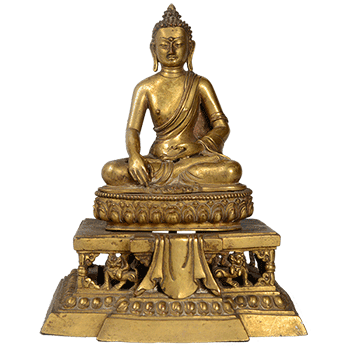The first image of a Vaikuntha Chaturmurti is said to be of the pre-Kushan period, around 2 nd century BC. This image comes from Bhita located in the district of Allahabad in Uttar Pradesh. Since then the images of the Vaikuntha Chaturmurti have been made under nearly all schools of art in India. A complete chaturmukh has four faces. The one in front is the human face depicting Vishnu, the one on the right is the lion face, and on the left is the boar face. At the back is Kapila or the fierce face. Further the image has four hands holding the conch-shell, the disc, the club, and the lotus and is mounted on Garuda, the eagle, which is the mount of Vishnu.



























